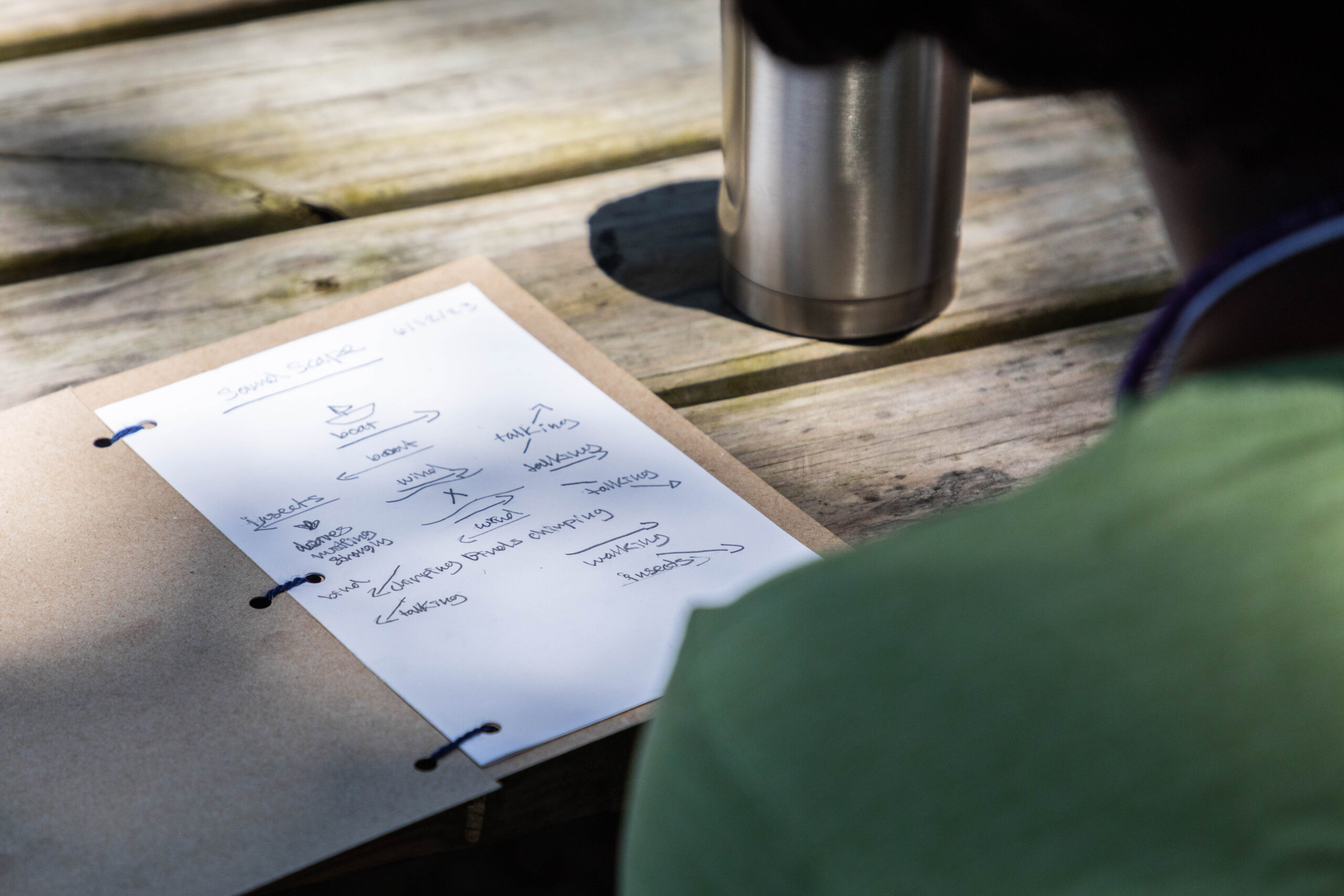“What do you hear? How often do you pay attention to the sounds around you? What produces sound?” These are some of the questions I challenged Summer Marine Science Campers to consider as I introduced them to the idea of soundscapes. Soundscape ecology is the study of the interactions between human-made, earth and biological sounds, and it’s something I studied as an undergrad prior to becoming a Marine Education Fellow at Marine Extension and Georgia Sea Grant.
As an undergraduate at Furman University in Greenville, South Carolina, my research involved conducting a soundscape analysis of a multifunctional landscape, the Bellbird Biological Corridor, in Costa Rica with the focus of sound as a valuable indicator of biodiversity. Even through presenting my thesis and co-authoring a peer-reviewed article published in Ecological Indicators, ‘Quantifying the Soundscape: How filters change acoustic indices,’ I wanted to share my work and findings beyond the scientific community.
When Anne Lindsay, Marine Extension and Georgia Sea Grant’s Associate Director of Marine Education, asked the fellows to propose an activity for our summer camps at the UGA Aquarium, I decided to take this opportunity to translate my research into something accessible for students that would be both interactive and educational. I decided to organize and lead soundscape nature journaling for the Coastal Guardian summer camp for students ages 12-14. The goal was to develop observational skills and encourage them to think critically about the importance of sound.
After introducing the topic and prompting the students with a handful of questions, they grabbed their homemade nature journals and set off to create their own soundscape maps. Each student found a spot at a picnic table or bench and closed their eyes to listen. A few minutes later I instructed them to draw an “x” in the middle of their page to mark their location and to begin to interpret the soundscape around them through pictures, symbols, and words. One student drew arrows in all directions with labels of “insects,” “talking,” and “leaves rustling strongly.” Another student sketched and labeled a bird singing on a limb behind him, a cicada chirping far away to the distance, and wind making sound as it blew through a tree to the left of him.
When we came back together as a group, I encouraged them to share their map with someone sitting next to them. Even though they were all sitting in the same outdoor area during the journaling activity, each student produced their own unique soundscape map. The students largely agreed that they did not actively think about the soundscape. When I asked about the importance of studying soundscapes, one student suggested how boats are a form of noise pollution. We opened this to a larger discussion of how interactions between different sounds in an environment could speak to the larger health of an ecosystem. We touched on how critical it is to collect data to observe larger trends over time, especially with increasing human impact.

Campers share their soundscape map with each other as they open to a larger discussion about the idea of sound as an indicator of ecosystem health.
Overall, the soundscape nature journaling activity was a success. One student shared their surprise at all they heard once they allowed themselves to fully concentrate on listening. Another remarked on how relaxing it was to sit still in nature and listen to its sounds.

Schulz (left) and Marine Education Fellow Micayla Cochran (right) engage with a camper on their interpretation of the soundscape.
Students learn through experience and creating connections. Observation cultivates a deeper sense of place and connectedness to the natural world. To distill my research into a summer camp activity that was both approachable and engaging for teenagers required creativity. It was rewarding to see how well the activity was received, and work towards bridging the gap between science and the community.


